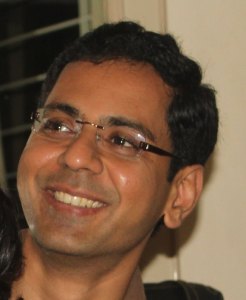
By Madhusudan Rajagopalan
Today (July 12) marks the first anniversary of the passing away of Vasudevan Swami, the frail and humble priest of the Nath Mandir in Vajreshwari. Vasudevan Swami was not a famous Master, at least not in the conventional sense. However, this saint was very well-known within the broader Mohanji family, as Mohanji would always talk about him lovingly as a prime, living example of bhakti (devotion). Though he was physically frail, his power came from his pure devotion and surrender. Those who had the good fortune of meeting him would attest to his stature – I do not know anyone who ever came back from a visit to his abode without rich blessings and immense internal peace.

Sri Vasudevan Swami was a religiously devout person from a very young age. He worked in Mumbai for most of his life. He eschewed all forms of material pleasures to focus completely on his devotions to the Lord. People would chide him for his single-minded focus and would try to lure him towards, wine, women and other pleasures. They reasoned with him that he was wasting his youth since this was the time to indulge in these pleasures. However, he turned his back on them and continued with his practices and devotions in spite of their ridicule. He got connected and became a staunch devotee of Bhagavan Nityananda of Ganeshpuri. Interestingly, even though he lived during Bhagavan Nityananda’s lifetime and prayed deeply to Bhagavan Nityananda, Swamiji only reached Ganeshpuri after Bhagavan Nityananda’s mahasamadhi (a saint’s conscious exit from the body). The proximity of Ganeshpuri, being a few hours away from Mumbai, allowed Swamiji to come there often to pay his respects to Bhagavan Nityananda. Once, he prayed to Bhagavan Nityananda to keep him permanently in Ganeshpuri.
Through divine intervention, Bhagavan Nityananda arranged for him to be the Mahant (priest) of the powerful Nath temple in Vajreshwari (the temple town next to Ganeshpuri). He moved there in the mid-80s to live in a little room within the temple premises. This powerful Nath temple is virtually unknown even among the people who live right across the temple. Bhagavan Nityananda stayed here when he first came to this region before he finally moved and made Ganeshpuri his residence. Matsyendranath and Gorakshanath, the Nath Gurus, are believed to have done tapas (intense penance) at this spot for over 2 months to appease the Divine Mother. The Divine Mother blessed them with her darshan (holy sighting) and gave Gorakshanath the blessing to work on the Nath Rahasya (the most important work of the Nath tradition). This temple has the holy padukas of Bhagavan Nityananda (blessed by Baba Himself) as well as the padukas of Matsyendranath and Gorakshanath. Swamiji dedicated his last 30+ years to loving service of this temple.
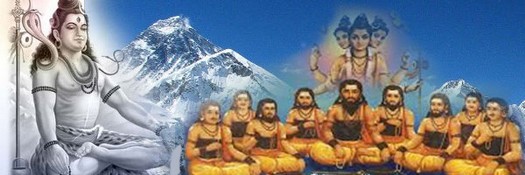
Much has been written and shared about Vasudevan Swami, both by Mohanji Himself as well as by several other devotees who visited him over the years. Readers can check these old articles for more information:
Mohanji on Bhagavan Nityananda
I first met Swamiji sometime in 2015, based on Mohanji’s guidance, after a visit to Bhagavan Nityananda’s Samadhi in Ganeshpuri. Subsequently, I had the opportunity to meet him many times as I live in Mumbai which is only a couple of hours away. He showered immense love and poured out blessings on us because we were Mohanji’s children. He took special care of us diligently showing us around the temple, letting us know the latest divine beings who came since we last came (to satisfy our inquisitive questioning :-)) and spending as much time with us as we wanted. He would also give his special vibhuti (sacred ash) from the incense sticks that he offered to the Masters during aarati. It had wonderful miraculous powers and had cured many people, offered protection to others and solved issues for many more. He would also offer special prayers to the Lord if you requested for them. Mohanji used to say that his prayers were commands to the Lord because of the pure selfless devotion with which they were rendered. Mohanji said that his prayers were simple, “My dear Lord, this is my request. Make it happen.” 🙂 🙂
His thought had tremendous power of manifestation. Once Mohanji was in Mumbai and suddenly said, “We need to go to Ganeshpuri. I would like to see Vasudevan Swamy.” When Mohanji met him, Vasudevan Swamy, as usual, received him with immense love. While they were chatting, he told Mohanji that some people from the Nityananda trust had gifted him with a nice shawl and some books in English the day before. He had wondered to Bhagavan Nityananda about what he was supposed to do with the books and even the shawl (since he only wore simple and almost tattered clothing). Bhagavan Nityananda told him to give it to Mohanji. He told Bhagavan, “Mohanji is always traveling around the world. How am I supposed to reach him?”. Bhagavan did not respond to his query. He said I was just thinking, in the morning, about how to reach you. Mohanji laughed and told Swamiji, “Swamiji, you were not just thinking. Your thoughts got me so restless in Mumbai that I had to come here. You literally dragged me here.” 🙂 🙂
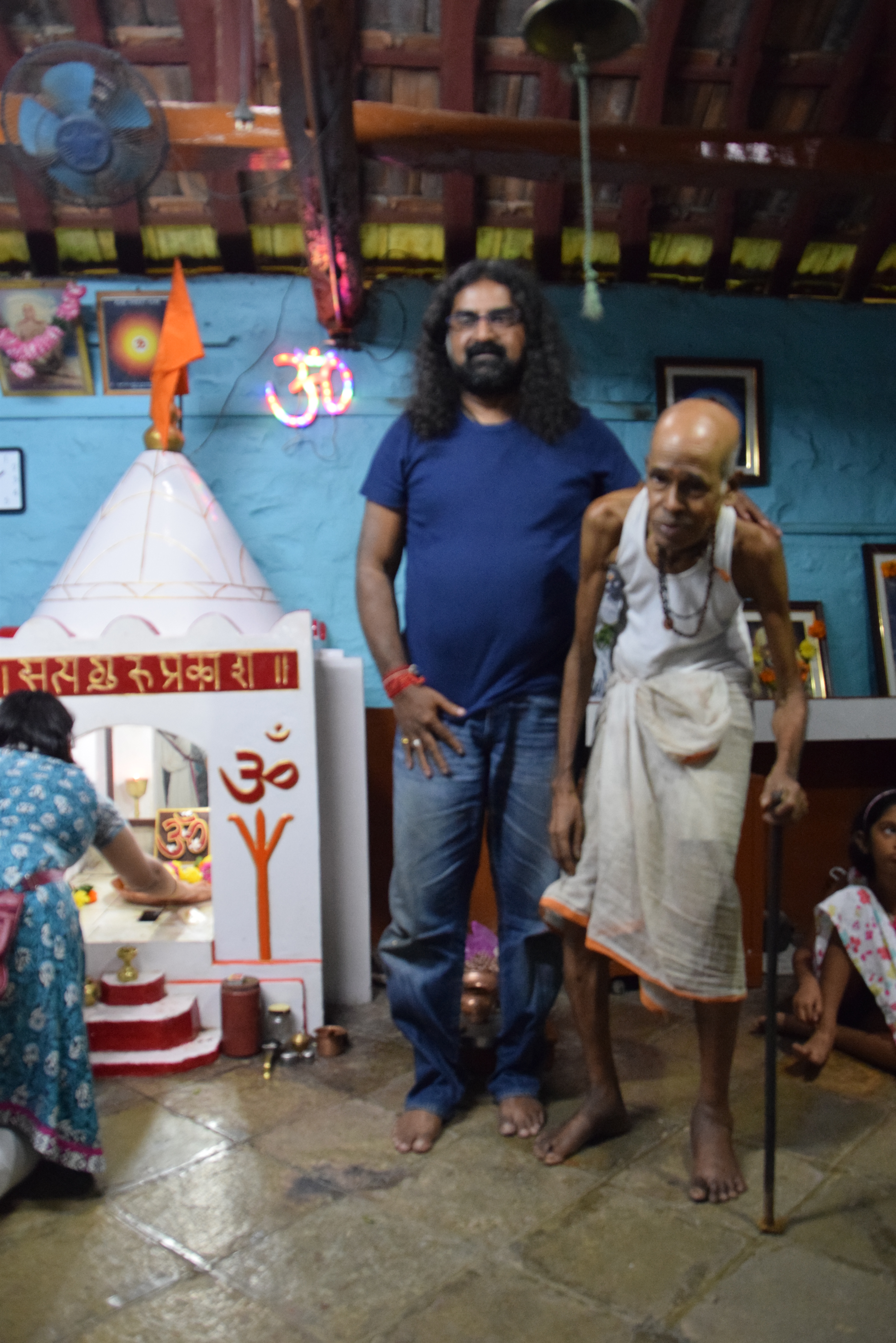
Sometime in March 2016, we had a weekend program with Mohanji in Ganeshpuri. On the last day of the program, before leaving for Mumbai, Mohanji went to meet Vasudevan Swamy in the morning. Before leaving for the Nath temple, Mohanji arranged to have some breakfast from the retreat (dosas and chutney) packed for him. Swamiji was overwhelmed when Mohanji gave him the packed breakfast. He said, “Mohanji, you got me breakfast. I don’t know what to say. You must have it with me.” Mohanji told him that this was only for him and he should have all of it by himself. Swamiji said, “I won’t feel good to eat it alone if you are here with me.” So Mohanji said, “In that case, I will leave so you can have the breakfast in peace.”
This time he came to drop us to the temple door which he seldom did. He had tears in his eyes. He told Mohanji, “I want you to know two things. 1. There is never a day that goes by when I don’t think of you 2. Always remember Bhagavan Nityananda walks with you.” This was very similar to the words of Baba Ganeshananda Giri. He had also said, “Always remember that wherever you go, I am behind you and my master, Shirdi Sai Baba, is always behind you.” When we left the temple, Mohanji told us that this meant that Vasudevan Swamy’s time was near and this was their last physical meeting. Mohanji said that Swamiji wouldn’t be around for too long and asked us to take care of him and his needs as best as we could. Accordingly, we visited him a couple of times over the next few months and provided him with some groceries and other basic needs.
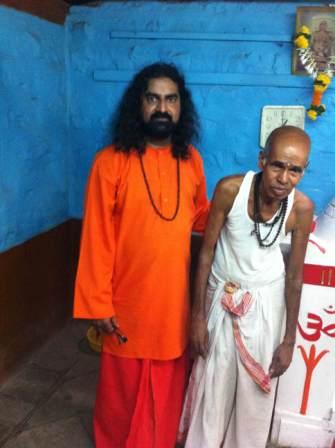
One fine day, I received a message from Mohanji (who was then in Croatia) that Vasudevan Swami was very unwell and ready to drop his body any moment. This was on July 4th at about 3 pm. I was in a meeting at my workplace. I immediately acknowledged his message and then, somewhat stupidly, asked him if I could go the next day to see him. I guess I was trying to be intelligent and to optimize my work schedule with this situation. He asked me what would be the use of that if Vasudevan Swami was leaving his body as we were speaking! Well, I then felt what can only be described as a loving slap on the face. 🙂 That did the job of beating the tamas out of me. Tamas is anything that causes postponement. For sure, Mohanji’s sharp question brought urgency to the fore and reset priorities in my head! I rearranged my schedule immediately and headed home to leave for Ganeshpuri. I learnt that Dr. Gajanan was with Swamiji and had been trying to feed Swamiji. Swamiji was struggling to even move from his bed.
Dr. Gajanan is a reputed homoeopath and he had communicated Swamiji’s ailment to Mohanji through one of his homoeopathy students in Serbia. So though I was in Mumbai and Dr Gajanan was in Ganeshpuri (just 60km from Mumbai), the route taken by the message was Ganeshpuri – Serbia – Croatia – Mumbai; goes to show that when an important message has to be delivered, distance doesn’t matter and a way is always found! As I was on my way to Ganeshpuri, Mohanji had given me only one clear directive, “We are his relatives. Do whatever it takes to help him.” So as we headed to Ganeshpuri, we coordinated with Dr Gajanan so that we could pool together to support Swamiji in any possible manner. We were also concerned about reaching on time, given the heavy rains over the last few days. We finally reached Vajreshwari around 5.30pm.

We were shocked to see how much Swamiji had shrunk from his already frail frame. He told us about how he had taken ill a few days ago, just after he completed a bhandara (food seva for a large group) at the Nityananda Trust. Soon after that, he said he sat down and since then he had been unable to move around, unless someone helped him. He said he didn’t have much time left and was praying to Baba (Bhagavan Nityananda) to take him soon. Though he was weak, he was fully in control and very clear about his plans. He said “Bahut seva kiya hai. Ab jaane ka time hai” (I have done a lot of service. It is now time for me to go).
Meanwhile before we reached, Dr. Gajanan had arranged for Swamiji to speak to Mohanji on the phone so that Mohanji could convey his respects to Swamiji. Swamiji sent his blessings to Mohanji. As Mohanji wrote in a private group, “I spoke to him. He said he did not want to be admitted in the hospital. He wanted to leave his body in the temple at Bhagawan’s feet. He said he always thinks about me and wanted to hear my voice one last time. He said that his blessings are always with me. This was so touching”. Mohanji asked us to check if Swamiji would like dosa and chutney or any other food that he felt like eating in his current state. He also asked us to offer fruits, gangajal (sacred water from the river Ganga) and coconut water to him.
It was almost 7pm by then and I wasn’t sure if the local stores would be open, especially given the weather conditions then. In any case, I decided to check and thankfully, I was able to get gangajal, coconut water as well as flowers for the temple shrine. When I offered the gangajal to Swamiji, he gratefully accepted it and said “Thank you. This is my medicine.” We told his attendant to give him the coconut water later, and then took his leave after a while. That’s when we realized that the rains had stopped while we were on our way so that we were able to reach on time, meet Dr Gajanan, Swamiji, coordinate with Mohanji and get Gangajal for him – another 30-40 minute delay and none of this would have been possible. As Mohanji pointed out, “Nath leela” was in play!
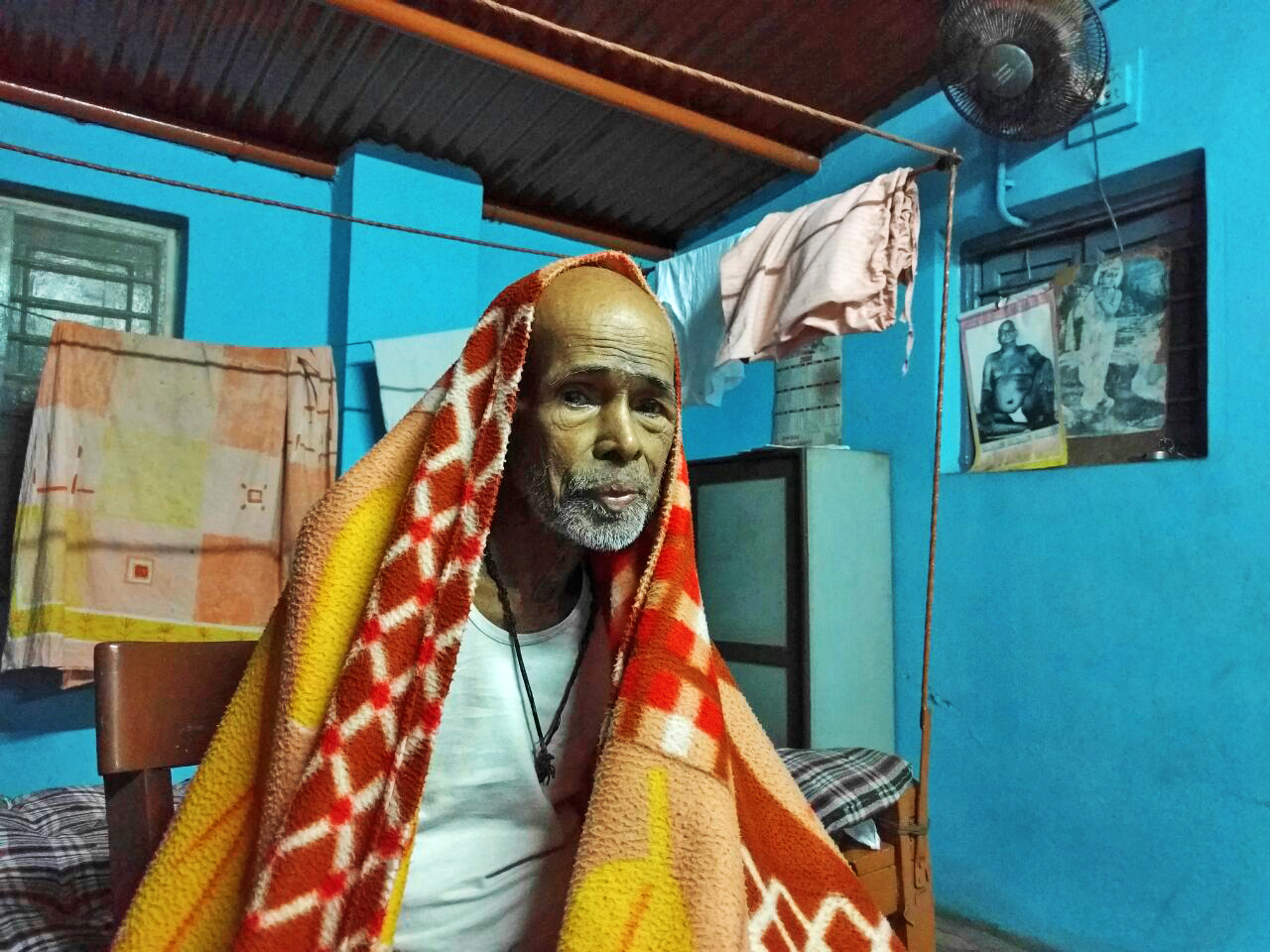
Before we left, we also asked Swamiji how he would like his body to be dealt with once he left – would he want a samadhi or would he prefer to be cremated. This might be a squeamish conversation for most of us, but I had realized from my earlier experience with Swami Ganeshananda Giri that saints don’t care about their body and deal with it in a matter-of-fact way. Vasudevan Swami was very clear that he didn’t want a Samadhi; he said “Who will take care of the Samadhi? Why trouble people? Just burn the body.” Since our trip to Badrinath was coming up in a few weeks, we asked him if he would like his ashes to be consigned to the holy Ganga, which he gladly agreed to. He also asked us to do a bhandara (food seva) in Ganeshpuri. So the plan was then clear – when he decided to drop his body, he would be cremated, his ashes would be distributed between Nashik (Godavari) and Rishikesh (Ganga), and we would do a food seva on his behalf.
I decided to come back the next day (July 5th) morning to check on Swamiji. When I visited him, a local shopkeeper was at the Nath mandir talking to Swamiji. Swamiji was talking to him about me and saying that I was going to visit him. Five minutes later, I entered. When I left the previous day, I had not planned on coming back and had certainly not shared that with Swamiji. Yet he knew I was going to come. Well, for a saint who calls deities like Hanumanji and Lord Krishna just with his devotion, I suppose calling mere mortals like me should have been child’s play! This time around, I brought him food from home (idlis + chutney) as well as more Gangajal. We had collected this gangajal ourselves from the river Ganga in front of Vashishta Caves, Rishikesh. Hence, its authenticity was guaranteed. He drank the gangajal immediately and said that he would eat the idlis later. He also looked noticeably brighter. Mohanji later explained that this was a sign of the soul shining bright and his last physical glow before leaving.
While I was sitting with Swamiji, he spoke about the arrangements he had made already. He had given cheques to the trust to take care of his cremation. He was also keen to give away his possessions stored in his little cupboard. He gifted us with a few dhotis and towels – these were then distributed among fellow members of the Mohanji family as precious blessings. I also took down the details of the nearby shopkeeper so that we could coordinate for collection of his ashes whenever the final moment arrived. This was a strange setting – a day ago, we were filled with sadness that Swamiji may not be around for much longer, and also if we would even get to see him. A day later, the mode was all about practicality, action and how to deal with the eventuality of when Swamiji would actually leave. This again was a sign that the Nath tradition was at work here – all purpose, no nonsense, no emotional drama – purely focused on the present moment and on the work that needed to get done.
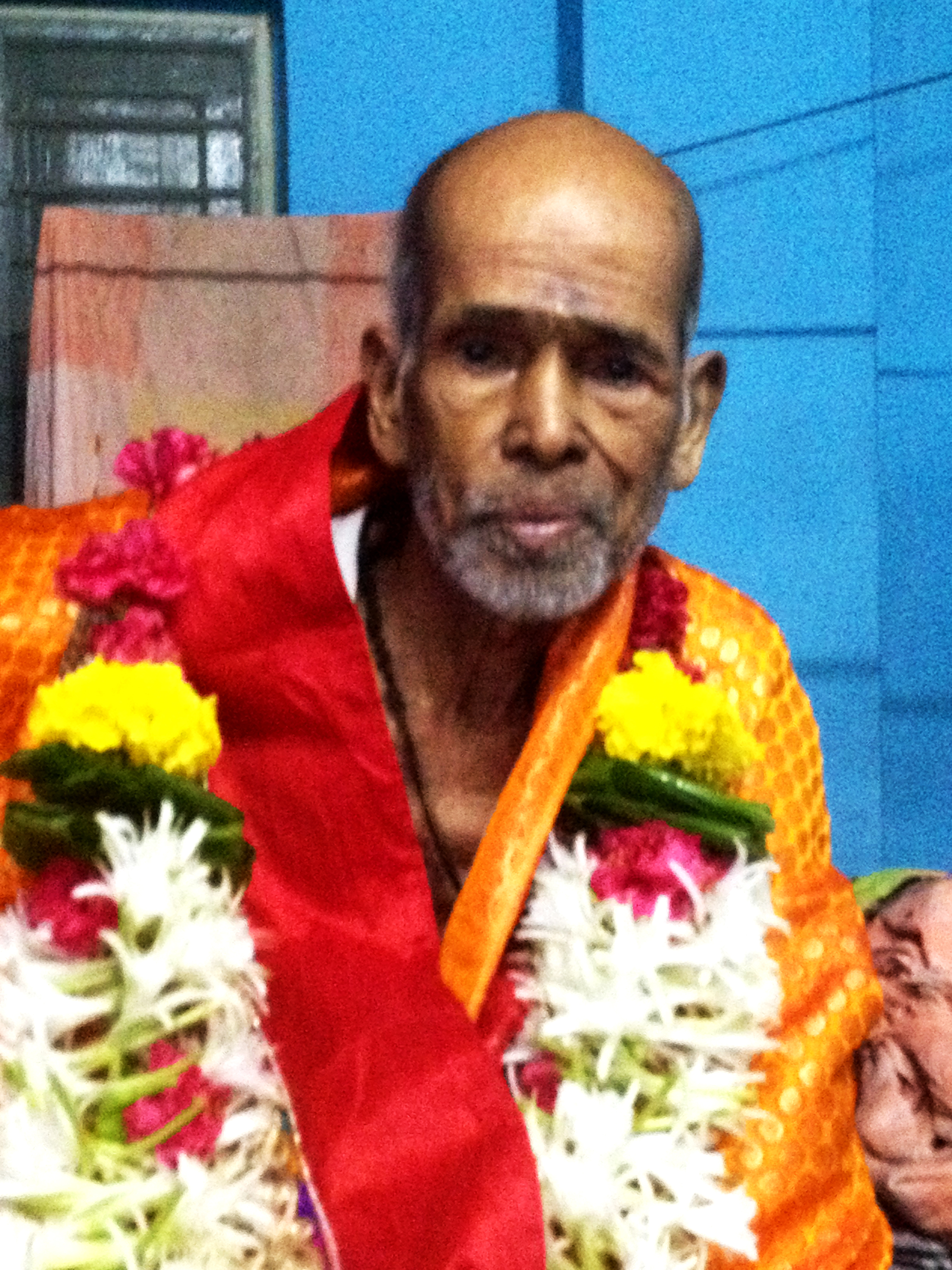
When I was leaving Swamiji, he said “It feels good to meet our people. Come again tomorrow”. I hadn’t planned on that, but once Swamiji said it, that became an order. I soon realized that the next day (July 6) was a holiday on occasion of Eid (the Muslim holy festival). Hence, it would be actually easier to come down without having to worry about schedules, etc. So, I went again on July 6th and took some sevaiyya kheer (milk-based dessert with semolina that is served during Eid) for him. This day, my timing was such that I reached late morning and spent a couple of hours with him. He confirmed that he was drinking Gangajal twice a day – this was considered important as a purification process before leaving the body. On the day before, another group had come to visit him and given him a rudraksha mala from Kathmandu. Swamiji had begun to wear this mala since then.
It was as if he was just going through a series of steps before the final moment. He kept talking about how it was just a matter of time now, and he was praying to Baba to take him soon. Finally around 1230pm, he asked to eat the kheer and I had the opportunity to feed him. In terms of timing, it couldn’t have been better as Bhagavan Nityananda’s noon aarti ends around 12:30, so it was as if one was offering to Baba Himself after His arati. Mohanji had remarked earlier about the perfect synchronization that is characteristic of the Nath tradition. The events of these days with Vasudevan Swami were clear evidence of how this worked.
Finally, I left the Nath Mandir that day (July 6, 2016) after taking Swamiji’s blessings, and conveying to him that we were available to help him with anything. By this time, many people in our Mohanji community had come to know about his illness so there was a stream of visitors already. Our friends Jeanetta and Deva from the Fire Mountain Retreat (in Nimboli, near Ganeshpuri) had visited him the previous day and were seeing him regularly. The local shopkeepers were doing their bit. Dr. Gajanan had agreed to take turns and visit him in the coming days as I was travelling out of Mumbai later that week. I intended to come back and meet him when I returned to Mumbai after a week.
In the next few days, things stayed more or less the same. Swamiji would eat a little bit of kanji (porridge) now and then. On his next visit, Dr Gajanan gave him some protein powder in milk to compensate for his weight loss. But Swamiji wasn’t getting any better. I last spoke to him on the 7th of July, a day after I met him. And finally I learnt via Dr Gajanan on July 12th that he had breathed his last around 11am. The gentle saint had finally passed away peacefully in his own temple, just as he had wanted.
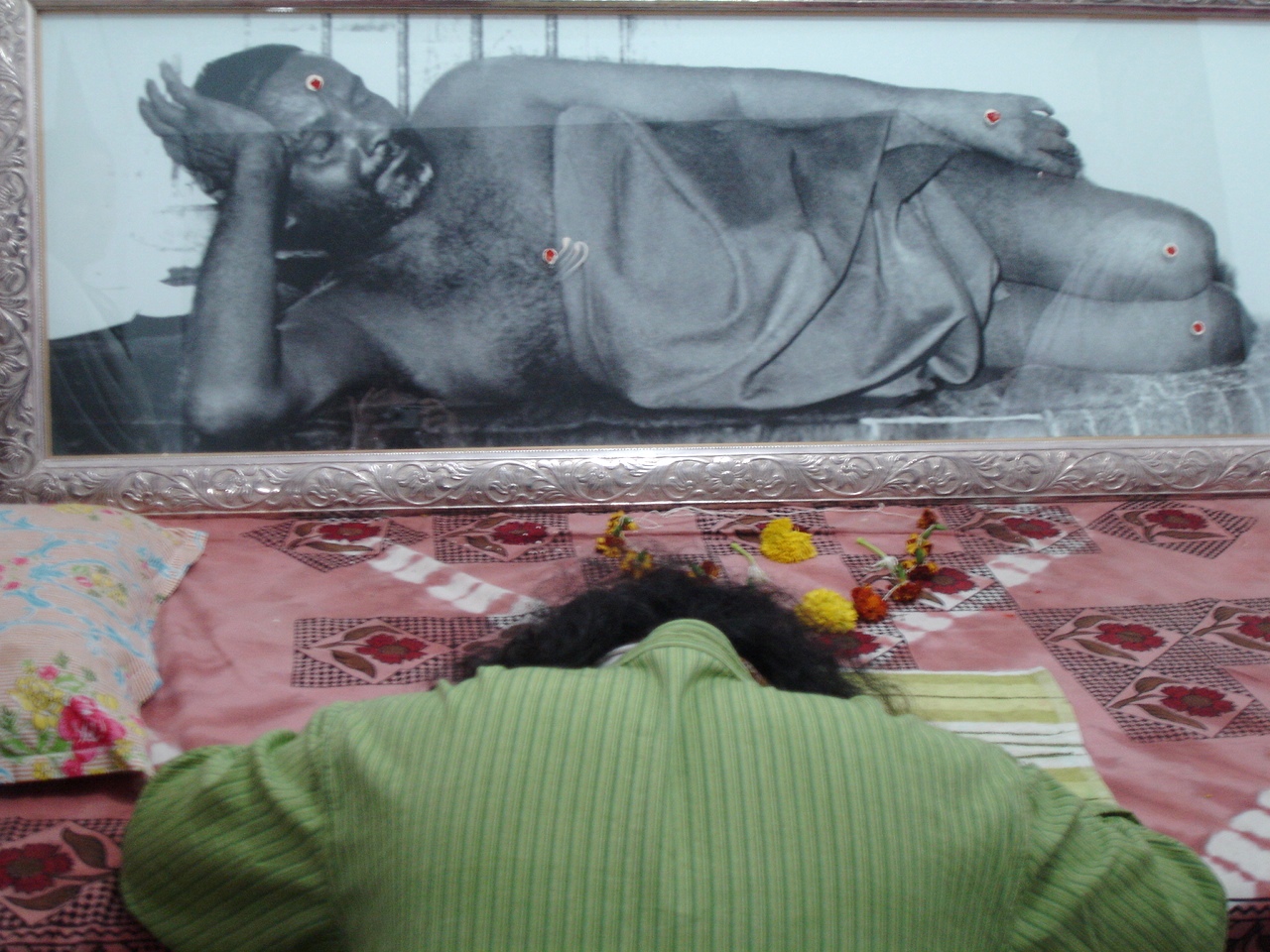
While this was sad news at one level, we had been expecting it, so the immediate priority shifted to our duties – we had to procure his ashes so that we could consign them to the holy Ganga river. Since I wasn’t in Mumbai at this time, we had to coordinate with the local people. Dr Gajanan asked his contact to collect some ashes. I had asked Swamiji’s attendant to keep some ashes for us, and the local shopkeeper I had met the previous week was also going to collect some ashes for us. Mohanji had asked us to ensure that the ashes were authentic, so we had to be doubly sure that there was no mix-up of any kind. I was hopeful that with three different contact points, this was taken care of.
We also had to arrange for the bhandara (food seva) at the Nityananda Sansthan and I began that process. It so happened that July was a busy month, with the occasion of Guru Purnima (July 19) as well as Bhagavan Nityananda’s Samadhi day (Aug 8) coming up. Our initial attempts to get the dates for this bhandara threw up dead ends – Guru Purnima day booked out, day 28 (coincided with Aug 8 = Bade Baba’s Samadhi day) or day 41 (Aug 21) were unavailable too. We wanted an early date, ideally before we left for the Badrinath trip, but there were no dates in July. Anyway, we put out a prayer to make this work out, just like everything else had worked out till then, and let it be. And lo and behold, I got a call back on the same day that July 27-28 (Wed-Thu) had suddenly opened up in the calendar. This was perfect for us as it was just a few days before we had to leave and we immediately blocked those dates.
Soon, I called up our local contacts to let them know that we would pick up the ashes on those days. To my shock, the first 2 people (Dr Gajanan’s contact and Swamiji’s attendant) mentioned that they had already consigned it to the river as they couldn’t keep it beyond 10 days. Desperately, I called up the local shopkeeper to check on his quota of ashes, and my call was just in the nick of time. He said he had been wondering what to do with it and, thanks to my call, he would now keep it carefully till we arrived. I then understood why we had to ask 3 different people to collect the ashes. If this third person hadn’t collected and stored it, our promise to Swamiji may have remained unfulfilled. But then the shadow of the Nath tradition’s grace was over us and ensured that all hurdles were crossed. On the appointed date (July 27-28), the bhandara was done in a grand fashion as per Swamiji’s wishes. We distributed photos of Swamiji to all the participants in the food seva and left another set at the Nath mandir, so that future visitors would also get to know about this great saint.
Soon, we were on our way to Badrinath. During our visit, we arranged for another food seva in Badrinath in honour of Vasudevan Swami. On our way back, we stopped at Vashishta Caves in Rishikesh to pay our respects to the shrine there and to take a dip in the holy Ganga. After we finished our holy dips, Mohanji took Vasudevan Swami’s ashes and finally consigned them to the river.
Since the Badrinath yatra was followed by the Kailash yatra, we also had the opportunity to offer Swamiji’s photo to holy Mansarovar lake as well as to the sacred Kailash mountain during the Inner Kora pilgrimage. At Rishikesh, after the dips in Ganga, Mohanji said “I’ve done my job”. With the further prayers in the most sacred places on earth, this could only mean that Swamiji was now nestled in Bhagavan Nityananda’s lap in the higher worlds.
For those interested in visiting the Nath mandir in Vajreshwari, please go ahead and do this at your earliest convenience. I have visited a few times after Swamiji’s demise and the temple is well-maintained by the trust. The local caretaker (Swamiji’s attendant) is a simple soul who goes about his job with great sincerity and welcomes people very warmly. As before, this temple is not known to many people and only the genuine seekers find their way there.
I consider myself blessed that I had the opportunity to meet and serve a pure Nath saint such as Vasudevan Swami. We have so much to learn from this modern day Hanuman, and his life was an example of selfless service and devotion. If only we can adapt some of this to our own lives, we would be doing ourselves (and therefore our society) a great service. My gratitude to Brahmarishi Mohanji for providing this opportunity to me, as it is only His grace that set this up.
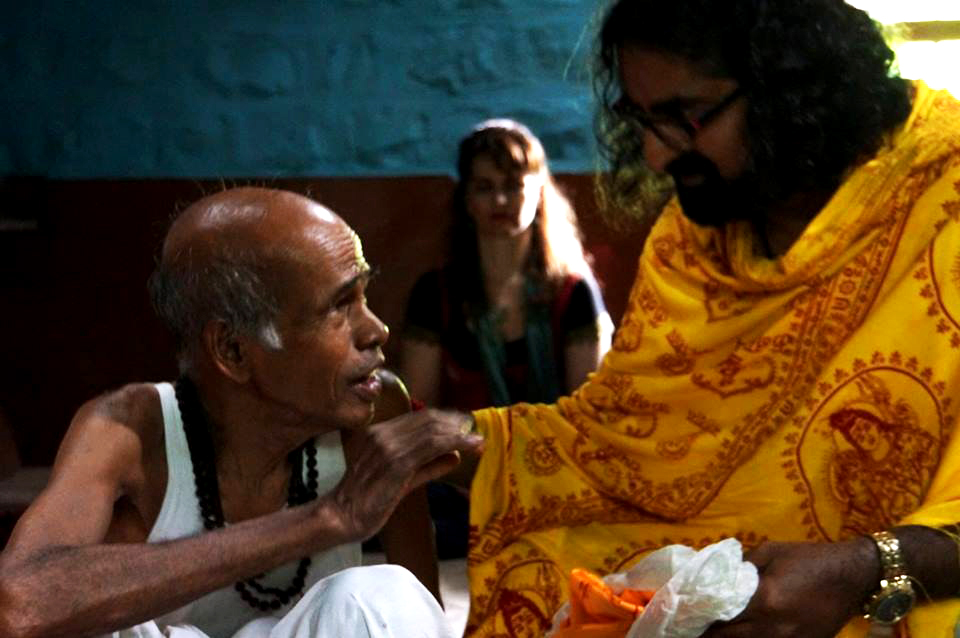
Disclaimer:
The views, opinions and positions expressed by the authors and those providing comments on these blogs are theirs alone, and do not necessarily reflect the views, opinions or positions of Mohanji, Mohanji Foundation, it’s members, employees or any other individual or entity associated with Mohanji or Mohanji Foundation. We make no representations as to accuracy, completeness, timeliness, suitability or validity of any information presented by individual authors and/or commenters on our blogs and will not be liable for any errors, omissions, or delays in this information or any losses, injuries or damages arising from its display or use.
We reserve the right to delete, edit, or alter in any manner we see fit blog entries or comments that we, in our sole discretion, deem to be obscene, offensive, defamatory, threatening, in violation of trademark, copyright or other laws, of an express commercial nature, or otherwise unacceptable.

10 thoughts on “A Powerful Master of the Nath Tradition: Remembering Vasudevan Swami”
You are indeed blessed and fortunate.
Thank you for posting this.
Jai Baba
Please provide me the exact address of the Nath mandir, vajreshawari.
It is right in front of the temple on the opposite road to the left side as you walk down the steps of the Vajreshwari temple. There is a small gate in between the flower sellers which leads to the temple (less than 25-50m).
-as a reply written by Rajesh Kamath on one of the comment post below
July 28, 2021 at 8:08 pm.
Very Touching … Great Saints dedicate their Lives for the welfare of Humanity… Jai Babaji
Pingback: Fond Memories of Vasudevan Swami – Mohanji Acharyas
Pingback: Fond Memories of Vasudevan Swami – Experiences With Mohanji
Pingback: Episode 17: A True Devotee – Bol Buddhu
very touching.. i wish to you where is the nath temple exactly located near vajreshwari? Can you share the location please. Thank you.
It is right in front of the temple on the opposite road to the left side as you walk down the steps of the Vajreshwari temple. There is a small gate in between the flower sellers which leads to the temple (less than 25-50m).
*know.